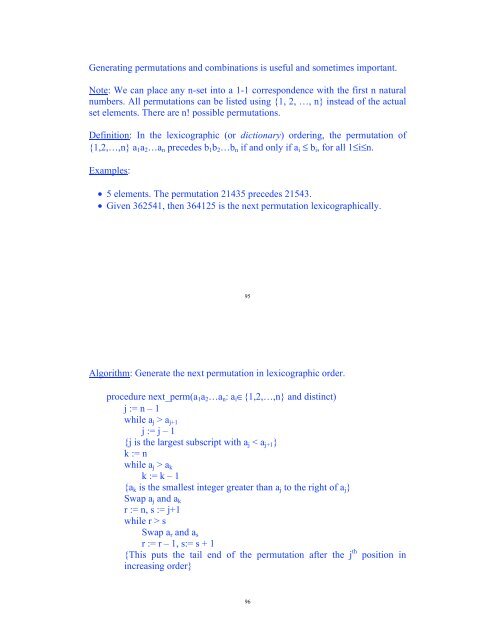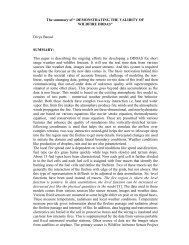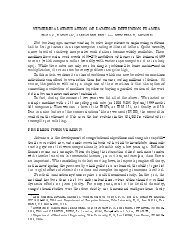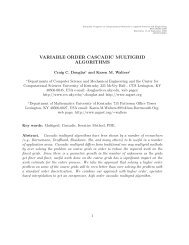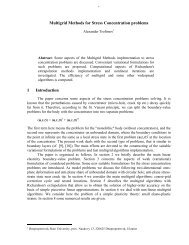Discrete Mathematics University of Kentucky CS 275 Spring ... - MGNet
Discrete Mathematics University of Kentucky CS 275 Spring ... - MGNet
Discrete Mathematics University of Kentucky CS 275 Spring ... - MGNet
Create successful ePaper yourself
Turn your PDF publications into a flip-book with our unique Google optimized e-Paper software.
Generating permutations and combinations is useful and sometimes important.<br />
Note: We can place any n-set into a 1-1 correspondence with the first n natural<br />
numbers. All permutations can be listed using {1, 2, …, n} instead <strong>of</strong> the actual<br />
set elements. There are n! possible permutations.<br />
Definition: In the lexicographic (or dictionary) ordering, the permutation <strong>of</strong><br />
{1,2,…,n} a 1 a 2 …a n precedes b 1 b 2 …b n if and only if a i ; b i , for all 1;i;n.<br />
Examples:<br />
• 5 elements. The permutation 21435 precedes 21543.<br />
• Given 362541, then 364125 is the next permutation lexicographically.<br />
95<br />
Algorithm: Generate the next permutation in lexicographic order.<br />
procedure next_perm(a 1 a 2 …a n : a i ,{1,2,…,n} and distinct)<br />
j := n – 1<br />
while a j > a j+1<br />
j := j – 1<br />
{j is the largest subscript with a j < a j+1 }<br />
k := n<br />
while a j > a k<br />
k := k – 1<br />
{a k is the smallest integer greater than a j to the right <strong>of</strong> a j }<br />
Swap a j and a k<br />
r := n, s := j+1<br />
while r > s<br />
Swap a r and a s<br />
r := r – 1, s:= s + 1<br />
{This puts the tail end <strong>of</strong> the permutation after the j th<br />
increasing order}<br />
position in<br />
96


